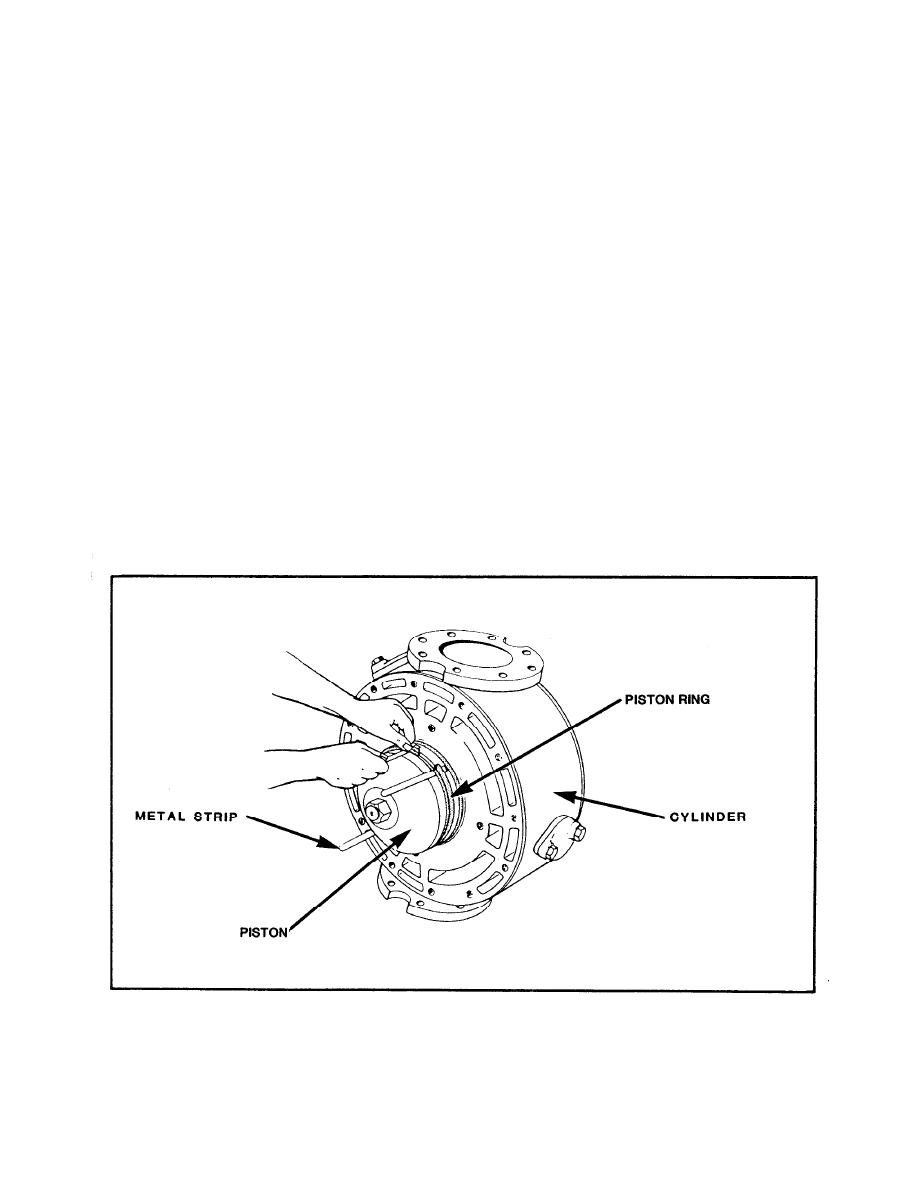

Custom Search
|
|

|
||
 the same port from which it was removed. Carefully follow the manufacturer's
instructions for valve removal and replacement.
8.5 Piston Rings. When replacing worn piston rings, the new rings must be
tried in the cylinder for fit. If the cylinder wall is badly scored or out of
round, rebore the cylinder, or if cylinder liners are fitted, replace them.
If necessary to file for end clearance, take care to file the ends parallel.
Clean the ring grooves and remove any carbon deposits before installing the
new rings. To install new rings, place several metal strips not more than
0.032-inch thick between the piston and rings (figure 2-2). Slide the new
rings over these strips until they are centered over the grooves and then pull
out the strips. Make sure the ring is free by rotating it in its groove.
Stagger the ring gaps of succeeding rings so they are not in line. Use a ring
clamping device when reinstalling the piston. If this is not available, wire
the rings tightly so they enter the bore easily. Consult the manufacturer's
instructions for carbon ring replacement.
8.5.1 Piston End Clearance. Always check piston end clearance after
replacing pistons or after adjustment or replacement of main, crankpin,
wristpin, or crosshead bearings. Consult the manufacturer's instructions for
proper clearances and method of clearance adjustment. To measure piston end
clearance, insert a length of l/B-inch diameter solder into the cylinder
through a valve port and turn the compressor over by hand so that the piston
moves to the end of its stroke. Remove the compressed solder and measure its
thickness to determine the piston end clearance.
FIGURE 2-2. Installing Piston Rings
2-9
|
 |
|
 |
||